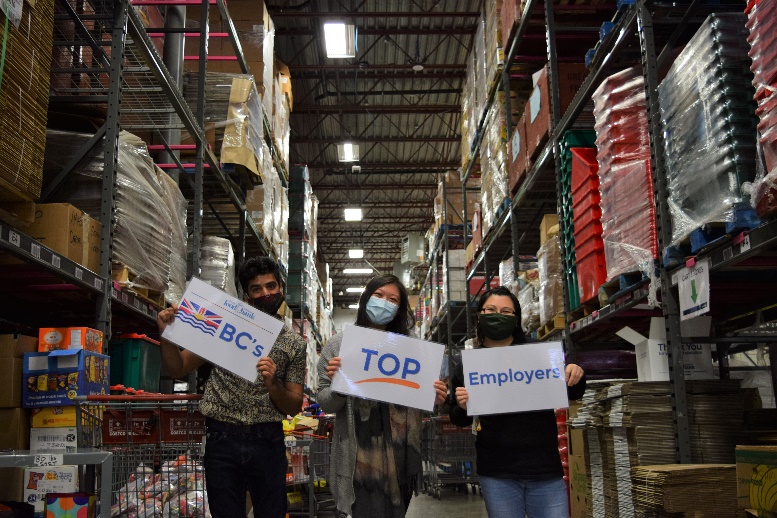It is cited by the widespread medical community that an average person needs 1,200 calories a day to survive, but beyond just fulfilling our basic needs, food is so much more than just survival. Food is an integral part of our everyday lives; it can be a driving factor that unites us or simply a difference in taste that can divide us. For most people, food is woven into our cultural identities and our traditions. For many, imaging what life would be like with the added element of food insecurity is a difficult challenge – it’s ingrained into our muscles’ memory to reach in our fridge and cupboards to take out we need, or to walk through a grocery store and fill our carts, but what happens when our access to food becomes limited?
For 4 million Canadians, this question is a painful reality. In 2020, Reuters reported that over 10% of people living in Canada will struggle to access food, a problem that ranges from running out of food or skipping meals to compromising on quantity and quality.[1] To combat these mounting issues, food banks have begun to rise throughout the country, serving their communities and becoming vital resources for those in need. Providing food to those in need can be difficult at the best of times, but with COVID-19, that task became much harder.
To gain some firsthand insight on the direct impact  Covid-19 posed on Canadian food banks, we reached out to Terra Paredes, the Manager of Community Events & Engagement at the Greater Vancouver Food Bank. Since 1983, the Greater Vancouver Food Bank (GVFB) has been providing food to community members in Vancouver, Burnaby, New Westminster, and North Vancouver. Although originally established as a temporary hunger relief solution, the need for long term food support grew, and in turn, so did GVFB. Today, they provide support to more than 9,000 children, adults, and seniors each week through their food distribution network centres and to thousands more through partnerships with more than 80 community agencies.
Covid-19 posed on Canadian food banks, we reached out to Terra Paredes, the Manager of Community Events & Engagement at the Greater Vancouver Food Bank. Since 1983, the Greater Vancouver Food Bank (GVFB) has been providing food to community members in Vancouver, Burnaby, New Westminster, and North Vancouver. Although originally established as a temporary hunger relief solution, the need for long term food support grew, and in turn, so did GVFB. Today, they provide support to more than 9,000 children, adults, and seniors each week through their food distribution network centres and to thousands more through partnerships with more than 80 community agencies.
Unfortunately, like many other charities, the Greater Vancouver Food Bank was no stranger to the initial set of challenges brought about during the beginning of the pandemic.[2] “Live events disappeared so the ability to raise funds in person was heavily hampered,” said Terra. In previous years, GVFB has relied on several different events such as open houses and countless in person food drives as their main source of fundraising, but when the doors of their 12 food distribution facilities shut, they had to think fast, get creative, and prepare to make changes each week to adapt.[3]
After launching their first Mobile Giving campaign in 2016, GVFB have frequently incorporated text-to-donate feature into their fundraising strategies. In their 5-year relationship with MGFC, they have launched several campaigns and even ran the first ever emoji-to-donate campaign a few years ago. The frequency of GVFB’s use of mobile giving only increased as the issues presented by Covid-19 grew. “We have found it to be a convenient and easy way to collect donations when closer contact is difficult or unsafe,” said Terra.
“In December of 2020,  we did a large campaign on radio (Rogers Radio Vancouver), followed immediately by a ‘drive thru’ holiday event that had no promotion, just the on-site visibility [of the text-to-donate call-to-action] to 300 vehicles per night for 21 nights.” The WinterLights event was a 2-kilometre route enjoyed from the safety of one’s vehicle, and included lands filled with glowing lights, special characters, and festive performers.[4] Throughout the entire month of December, donors could text the red heart emoji “❤️” to 30333 to give $25. Donors were able to tune into the radio and drive through the awe-inspiring light show to hear and see the very dedicated GVFB team promoting their latest text-to-donate campaign. “We collected over $16,000 through the emoji campaign that we would have missed out on otherwise. Some didn’t understand how to do it. But those who understand texting in general found it to be a convenient way to give. We also found that giving a higher dollar amount ($25) was very successful. More people than we expected were happy to give a $25 donation through text.” When we asked Terra if the Greater Vancouver Food Bank had plans to utilize text-to-donate in the future, her answer was simple: “Absolutely!”
we did a large campaign on radio (Rogers Radio Vancouver), followed immediately by a ‘drive thru’ holiday event that had no promotion, just the on-site visibility [of the text-to-donate call-to-action] to 300 vehicles per night for 21 nights.” The WinterLights event was a 2-kilometre route enjoyed from the safety of one’s vehicle, and included lands filled with glowing lights, special characters, and festive performers.[4] Throughout the entire month of December, donors could text the red heart emoji “❤️” to 30333 to give $25. Donors were able to tune into the radio and drive through the awe-inspiring light show to hear and see the very dedicated GVFB team promoting their latest text-to-donate campaign. “We collected over $16,000 through the emoji campaign that we would have missed out on otherwise. Some didn’t understand how to do it. But those who understand texting in general found it to be a convenient way to give. We also found that giving a higher dollar amount ($25) was very successful. More people than we expected were happy to give a $25 donation through text.” When we asked Terra if the Greater Vancouver Food Bank had plans to utilize text-to-donate in the future, her answer was simple: “Absolutely!”
We’d like to thank Terra Paredes of the Greater Vancouver Food Bank for taking the time to answer our questions about their experience leveraging text-to-donate. We would also like to take this opportunity to remind our readers that food banks across Canada need our continued help during these rapidly changing times and especially throughout the approaching holiday season. Make sure to check in with your local food banks too see how you can feed others in your community. If you’d like to make a donation to support the Greater Vancouver Food Bank, you can text ❤️ to 30333 to donate $25, or visit: https://foodbank.bc.ca/.

Sources:
[1] https://www.reuters.com/article/us-canada-health-food-idUSKBN1ZJ0JE
[2] https://foodbank.bc.ca/blog/greater-vancouver-food-bank-issues-urgent-call-for-financial-donations-grocery-bags-and-volunteers/
[3] https://foodbank.bc.ca/blog/media-release-food-banking-in-a-pandemic/
[4] https://foodbank.bc.ca/blog/pne-winterlights-raised-almost-70000-for-the-greater-vancouver-food-bank/
